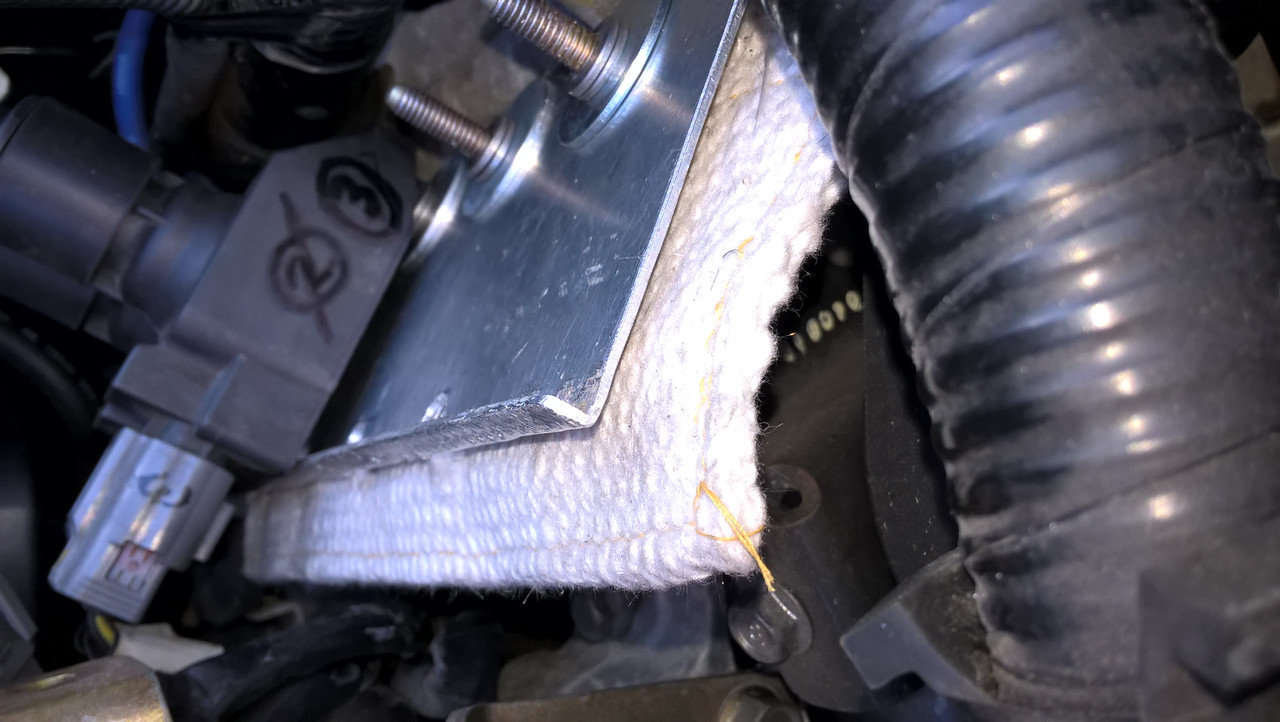warpc0il wrote: ↑Thu May 09, 2019 10:40 am
The coils will have a design optimal working temperature, which will be defined at some point within the core and higher than measured at various parts of the outer casing.
Mazda, well aware of the excess engine bay temperatures and resultant issues created in the later RX7s, with their twin-turbos and everything squeezed-in so tight, initially designed the RX8 engine bay to be cooled by an opening below the front number plate, within the "mouth grill".
However, during pre-production testing, even in high-ambient, they discovered that the excess cool air chilling the intake side of the engine was causing thermal stress to the engine block and, at lower ambient, creating condensation within the oil system.
If you look through the diamond-shaped holes below the front numberplate you'll see they're blocked-off, and if you remove the bumper you'll find the rubber blanking panel they had to add for production, to stop cool air directly entering the engine bay.
One of the design team was quoted as saying "This panel could be removed if you were running full power for long periods, with less foreword motion" - which is engineer's speak for "Drifting"

I have read in multiple forums that same statement about the reasons why the upper grid is covered, but I really have to ask, has anyone seen it reflected in any technical note of Mazda? or simply "we have heard someone who says he has heard someone who said ...".
In addition, I have always been surprised that some of the defenders of that theory and advise not to remove that cover then, in their cars, change the front defense by other aftermarket with huge front openings.
In my opinion, that is not the cause, because:
At the rear of the radiator, its upper half is covered by the battery and admission boxes; therefore, all the air that passes through the radiator, both the one that can enter through that cover and the one that passes through the lower opening, has no choice but to exit through the lower part of the transverse bar in which support the battery and filter box, that is: both if we open the grid and if we do not open it, the air will come together in the lower part and will affect the same areas of the engine block and in no case in the intake area that is almost all higher than the crossbar . In any case, I insist, the air that can enter through that grid, must always pass through the radiator and therefore never send "fresh air directly to the engine block"
My theory about that cover is another:
As the radiator is so inclined, if we open the upper grille, the air that hits the top and does not get through the radiator will move downwards, pushing and deflecting the air that reaches the lower areas, so the flow of Lower air will be greatly impaired (especially at high speeds).
With the grid covered, the air entering through the lower mouth, will form inside the nose an "air bag" that will go through the radiator, even in the upper area and without altering the inflow in the lower area.
Hence the importance of keeping the foam seals around the radiator in good condition so as not to leak in "that air bag".
In my case, almost 3 years ago I decided to bet on the maximum air flow:
- I removed that front cover
- I have modified the battery holders and air filter box to remove the blockage of the air in the upper part of the radiator (orienting the flow downwards anyway)
- I have placed some baffles in front of the radiator, to direct the air flow of the 2 frontal entrances and to have them incline perpendicularly to the radiate.
I already have more than 20000km with these modifications: I think it has greatly improved the cooling in summers and in the winters I have never seen condensation in the oil.











